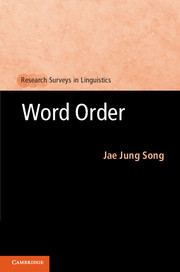Book contents
5 - The Optimality-Theoretic approach
Violable constraints and constraint ranking
Published online by Cambridge University Press: 05 June 2012
Summary
Optimality Theory (OT), which began with Prince and Smolensky’s (1993[2004]) seminal work, is a relatively recent arrival on the linguistics scene, having originally emerged in the context of phonology (e.g. Kager 1999; Scheer 2010), and subsequently extended itself to other areas, including syntax, language change and language acquisition, inter alia (e.g. Dekkers, van der Leeuw and van de Weijer 2000; Legendre, Grimshaw and Vikner 2001; McCarthy 2002; Smolensky and Legendre 2006). Conceived in the early 1990s within the generative paradigm, OT has inherited certain theoretical underpinnings from its intellectual progenitor, Generative Grammar (GG) (i.e. Chomsky 1965, 1981, 1993; also Chapters 3 and 4). (This is why readers unfamiliar with GG are advised to read Chapter 3 (and, preferably, Chapter 4), which will provide them with an overview of GG.) Above all, OT, in principle, purports to be a theory of human language capacity or linguistic competence, as opposed to performance (McCarthy 2002: 9–10, 51, 242). Nevertheless OT represents a radical conceptual shift from GG in that it has adopted a very different conception of constraints: within OT, constraints are violable (i.e. some constraints losing out to other constraints) not inviolate or invariant (i.e. no constraints losing out to any other constraints), as in GB or P&P. Thus within OT, constraints are inherently or perpetually in conflict; one of the major objectives of OT, in fact, is to ascertain how conflicts among competing constraints are resolved in individual grammars or languages (i.e. different constraints taking priority in different languages). Moreover, OT is a significant departure from many other contemporary theoretical models in that it does not constitute “a substantive theory of any phenomenon, syntactic or otherwise” (Legendre 2001: 3). Stated differently, the nature and content of constraints and representations utilized in OT are “largely independent of the claims made by OT”, as they are extensively imported directly from other theoretical models, including P&P or Lexical-Functional Grammar (LFG) (Legendre 2001: 20). What OT, as a non-substantive theory, does provide, however, is the basic architecture of grammar and the formal means or mechanism whereby these ‘imported’ constraints and representations are handled in its fundamental modes of description, analysis and explanation. Thus, regardless of whether a given problem concerns phonology, syntax or language acquisition, OT’s solution to the problem remains the same – that is, constraint interaction through language-specific constraint ranking (Legendre 2001: 21; McCarthy 2002: 59).
Information
- Type
- Chapter
- Information
- Word Order , pp. 160 - 233Publisher: Cambridge University PressPrint publication year: 2012
